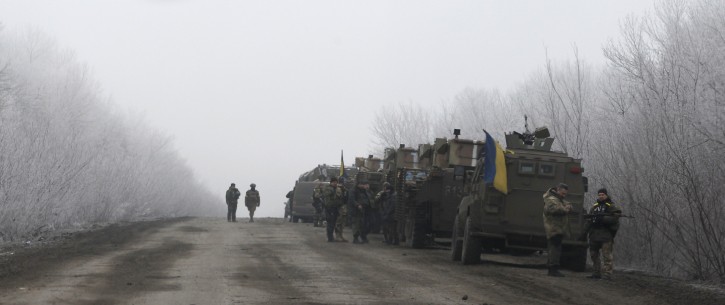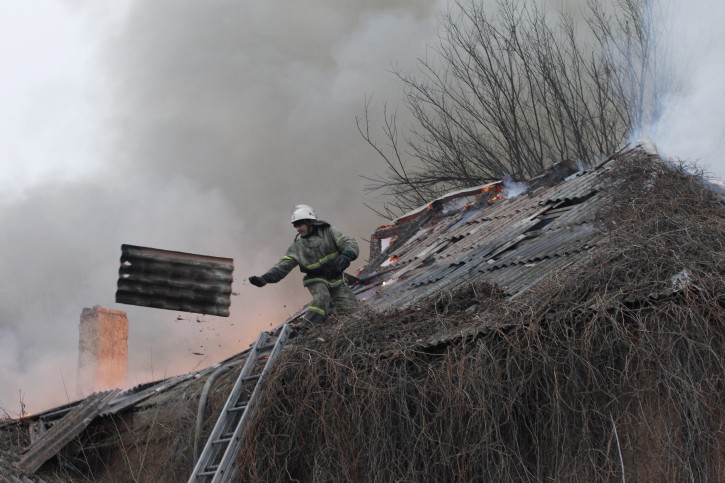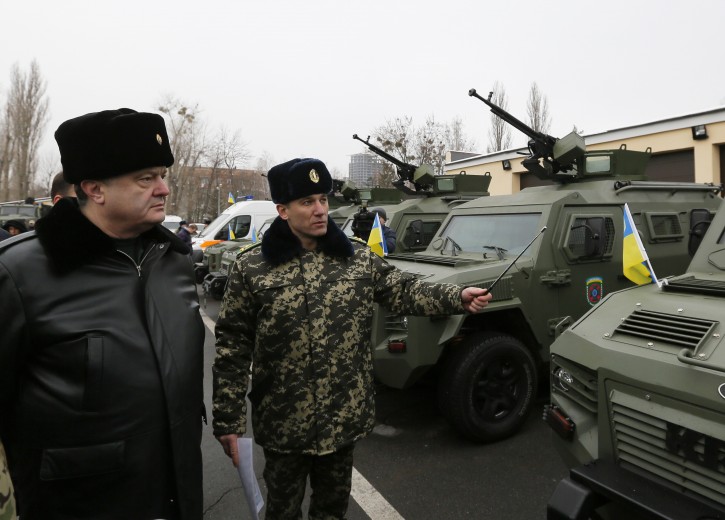 Kiev, Ukraine – The cease-fire period for fighting in Ukraine began one minute after midnight Sunday, bringing slim hopes of a reprieve from a grueling conflict that has killed at least 5,300 people and displaced more than 1 million.
Kiev, Ukraine – The cease-fire period for fighting in Ukraine began one minute after midnight Sunday, bringing slim hopes of a reprieve from a grueling conflict that has killed at least 5,300 people and displaced more than 1 million.
Subscribe to our Daily Roundup Email
Under an agreement struck last week, Ukrainian forces and Russian-backed separatist rebels are to begin pulling back their heavy weaponry this week to form a wide buffer zone.
But anxiety remains high that unrest could be sparked anew by rival claims to Debaltseve, a strategic railway hub now controlled by the government.
The hours before the cease-fire were marked by ferocious battles as Ukrainian forces undertook desperate efforts to hold onto Debaltseve, as well as the highway leading northward from the town to the Ukrainian rearguard.
Ukrainian President Petro Poroshenko issued the order in a live broadcast for all the country’s armed forces to hold their fire from one minute after midnight Kiev time (2201 GMT, 5:01 p.m. EST).
Residents of the city of Donetsk, the separatist stronghold which has been under fire from Ukrainian forces, reported that shells stopped falling immediately after the declaration of the cease-fire.
In an inauspicious omen for the prospects of any cessation of hostilities, rebels have said they will not consider any battles for Debaltseve to be a violation of the cease-fire. Separatists argue that the town has been completely surrounded by their forces and that Ukrainian troops still dug in there should surrender.
Poroshenko dismissed suggestions that Ukrainian forces have been isolated, saying that there had been a rotation of troops Saturday and that fresh consignments of ammunition were supplied. Military officials said the front remained unchanged despite all the fighting that took place Saturday.
An undated satellite image released Saturday by the Ukrainian government showed a five-kilometer- (three-mile-) long cloud of black smoke hovering above Debaltseve, evidence of what it said was the scale of rebel shelling.
Entire swathes of the regions of Donetsk and Luhansk were caught up in artillery duels Saturday.
Officials in the key government-held port city of Mariupol reported an array of artillery attacks hitting areas near the city Saturday morning.
Mariupol is on the Azov Sea and concerns are strong that the Russian-backed separatists aim to seize it to create a land corridor that runs between mainland Russia and the Crimean Peninsula, which Russia annexed 11 months ago.

Towns distant from the front line were not spared either.
Projectiles rained down Saturday afternoon on the government-held town of Artemivsk, 40 kilometers (25 miles) north of Debaltseve, striking a school, which rapidly burned to the ground.
Associated Press reporters also saw an artillery barrage near the government-held town of Svitlodarsk, 20 kilometers (12 miles) north of Debaltseve, as well as considerable movement of Ukrainian forces’ armored vehicles and rocket launchers along the road.
Russia has repeatedly denied repeated Western claims that it has sent troops and equipment to the rebels. But on Saturday, the U.S. ambassador to Ukraine, Geoffrey Pyatt, posted on Twitter what he said were satellite photos showing Russian artillery systems near the town of Lomuvatka, 20 kilometers (12 miles) northeast of Debaltseve.
The images could not immediately be verified.
In a telephone call with Poroshenko hours before the start of the cease-fire period, President Barack Obama expressed his “deep concern about the ongoing violence, particularly in and around Debaltseve.”
The White House said in a statement that the two leaders “emphasized the pressing need” for all parties to implement the cease-fire and agreed to remain in contact in the coming days. Obama also spoke with German Chancellor Angela Merkel who took a lead role in negotiating the cease-fire agreement.
The deal was hammered out in a marathon talks this week between Merkel and her counterparts from Ukraine, Russia and France in the Belarusian capital, Minsk.

German Foreign Minister Frank-Walter Steinmeier said failure to maintain the peace would cost the region and the people of eastern Ukraine “a high price.”
“If we miss this opportunity, the chance to defuse the serious conflict in eastern Ukraine by way of negotiations will be gone for a long time,” Steinmeier said.
Speaking in Kiev on Saturday afternoon, Poroshenko said his government would take urgent measures if the Minsk agreement collapsed.
“If there is no peace, we may have to take the decision to impose martial law,” he said. “In this event, martial law will be imposed not only in the Donetsk and Luhansk (regions), but across the whole country.”
Withdrawals of heavy weaponry from the front line, creating a zone roughly 50-140 kilometers (30-85 miles) wide, depending on the caliber of the weapons, are to begin Monday and be completed in two weeks. No provisions are envisioned for the withdrawal of troops.
The peace plan also requires the Ukrainian government to resume paying pensions and state benefits to citizens in rebel-held territory. Ukraine’s financial blockade against the rebels has led to a catastrophic collapse in living standards in eastern Ukraine, depriving the poorest of any immediate means of support.
The fighting started in April after armed pro-Russian separatists took control of towns and official buildings in the Donetsk and Luhansk regions. The seizures began after Russia-friendly president Viktor Yanukovych was driven from power in the wake of months of protests in the capital, Kiev.
The separatists claim the new Ukrainian authorities are fascist-inspired and aim to suppress the heavily ethnic Russian population in the east.
